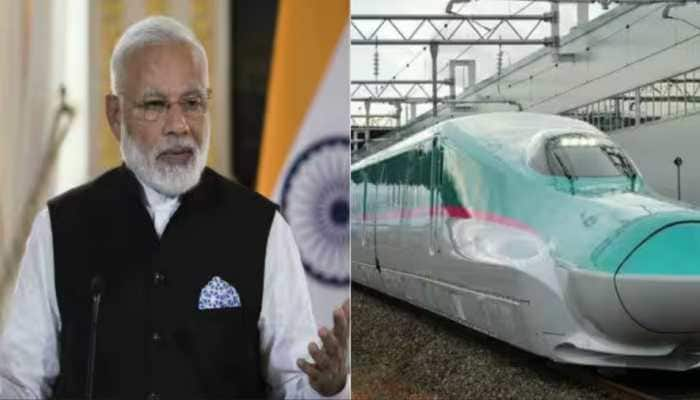New quake-proof Raj Bhavan for Tripura, old one to be Tagore museum
The Tripura government Tuesday said it was building a new quake-resistant Raj Bhavan and converting the present building into a museum.
Trending Photos
)
Agartala: The Tripura government Tuesday said it was building a new quake-resistant Raj Bhavan and converting the present building into a museum and research centre on Nobel laureate Rabindranath Tagore, who had composed several works during his stay there.
The museum at the Pushpavant Palace, the residence of the state`s erstwhile princely family, is intended to serve as a tribute to Tagore, who visited Tripura seven times between 1899 and 1926, on his 150th birth anniversary Tuesday.
"The fear over quakes has increased in Tripura after the massive earthquake followed by tsunami that hit Japan March last year, claiming thousands of lives and causing all-round destruction. Tripura Governor D.Y. Patil had himself expressed his keenness to shift residence from the 95-year-old Raj Bhavan building," a top official told reporters on condition of anonymity.
Chief Minister Manik Sarkar said that the state government had been also considering to make the Pushpavant Palace, the present Raj Bhavan, as a Tagore museum and research centre.
"Quake risk and subsequently insistence from many experts, including the governors the process of construction of a new Raj Bhavan has been expedited," he said.
India`s northeastern region, that includes Tripura, falls in Zone V, the sixth worst quake-prone belt in the world, according to geological studies.
"The Nobel laureate poet had stayed in the Pushpavant Palace during his last visit to the state in February 1926. He composed songs and poems sitting at the `Kabi Varanda` of the gigantic palace.
As the bard`s reminiscences have been associated with the palace, we have decided to make it a Tagore museum and research centre," said Sarkar, a great fan of Rabindra sangeet.
The towering Pushpavant Palace was constructed in early 1917 by the then ruler Maharaja Birendra Kishore Manikya (1909-1923).
The erstwhile princely state had merged with the Indian Union in October 1949 and the palace turned into the Raj Bhavan in 1970.
The chief minister said that all possible types of modern quake resistance measures would be taken in the new building of the Raj Bhavan, being constructed at the new capital complex, 9 km north of the state capital, where the towering and earthquake proof new civil secretariat - the biggest in eastern India and legislative assembly had shifted earlier.
According to the chief minister, the new Raj Bhavan would be constructed within 30 months by the West Bengal government owned engineering company, Macintosh Burn Ltd., at 10 acres of land with an estimated cost of Rs.300 million.
Governor Patil, while laying the foundation stone of the new Raj Bhavan, said : "The `Pushpavant Palace` or the present Raj Bhavan was built 95 years ago in accordance with the then architectural methods and could not be made quake-resistant.
It is expected that the construction agency would take due care in upkeep of modern technology views with quake resistance."
"The present Raj Bhavan building has been identified as a heritage building not only because of its association with royalty but also because the great poet Tagore and many others contemporary great personalities had stayed in Pushpavant Palace, the governor said.
Another two-storied mansion `Ujjayanta Palace`, which until now housed the Tripura legislative assembly, was built by then Maharaja Radhakishore Manikya Bahadur in 1899-1901. It was the command centre of the erstwhile princely rulers.
A major earthquake that struck Agartala in 1897 had caused substantial damage to the Ujjayanta Palace that was then under construction.
The sprawling Ujjayanta Palace was now being doing quake proof retrofitting to prevent the majestic buildings from possible earthquake before making it as a full-size museum.
The Geological Survey of India had earlier notified that the mountainous north-eastern region could experience major earthquakes.
Assam experienced a massive tremor measuring 8.5 on the Richter scale Aug 15, 1950, that claimed some 1,500 lives. The worst quake, measuring 8.7, was felt in the region in 1897. It killed 1,600 people.
IANS
Stay informed on all the latest news, real-time breaking news updates, and follow all the important headlines in india news and world News on Zee News.
Advertisement
Live Tv
Advertisement







)
)
)
)
)
)
)
)
)
)
